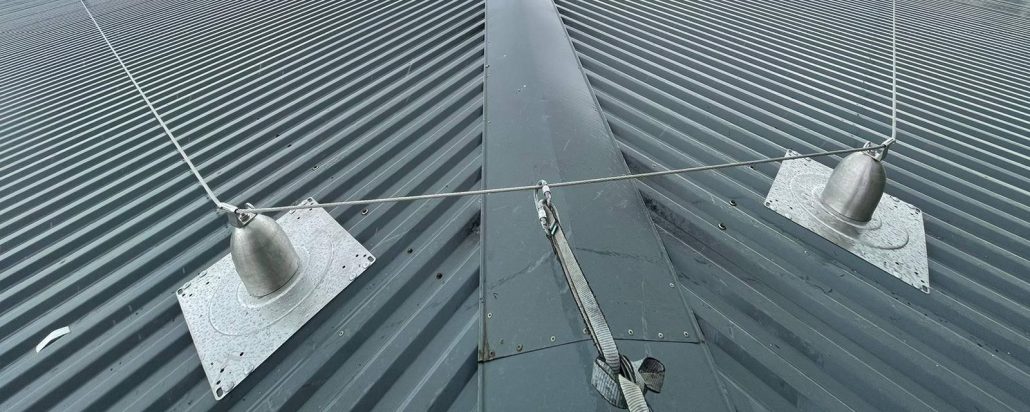
Anchor Points for Fall Prevention Systems: A Comprehensive Guide
Anchor points are a critical component of any fall prevention system. Whether used in construction, roofing, or maintenance tasks at heights, proper anchor points are essential to ensure worker safety and compliance with safety regulations. In this article, we’ll dive into the importance of anchor points, their types, and key factors to consider when installing them for your fall arrest system.
What are Anchor Points in Fall Prevention Systems?
An anchor point is a secure attachment point that is used as part of a fall protection system. It serves as the point of connection between the worker’s safety harness and the building or structure. When installed correctly, anchor points prevent a worker from falling or mitigate the severity of a fall.
Anchor points can be permanent or temporary, depending on the work environment, and must be able to withstand substantial forces to ensure the safety of personnel working at height.
Types of Anchor Points for Fall Prevention
There are various types of anchor points used in different fall prevention systems, each tailored to specific tasks and environments. Below are the most common:
- Fixed Anchor Points
Fixed anchor points are permanently installed on structures and buildings. They are designed for regular use in environments like rooftops, bridges, or industrial settings where workers frequently perform maintenance at heights. - Temporary Anchor Points
Temporary anchor points are portable and can be installed for short-term projects. They are often used in construction or roofing jobs where workers need to frequently relocate their safety harness. These anchor points are removed once the job is complete. - Mobile Anchor Points
Mobile or movable anchor points are designed to move with the worker while providing continuous fall protection. These are often installed on overhead systems or rails that allow workers to have freedom of movement while remaining safely attached. - Horizontal Lifeline Systems
Horizontal lifelines are more complex systems that span a large area and allow multiple workers to be attached simultaneously. They are commonly used in environments like construction sites, large roofs, and industrial plants.
Choosing the Right Anchor Point for Your Fall Arrest System
Selecting the appropriate anchor point for your fall prevention system depends on several key factors, including the environment, the type of work being done, and regulatory requirements. Below are important considerations:
- Strength and Load Requirements
According to OSHA standards, anchor points must be able to support at least 5,000 pounds per worker attached or be part of a system designed by a qualified person with a safety factor that meets regulatory requirements. Always ensure that your anchor points meet the necessary load requirements. - Location
Proper placement of anchor points is critical. They should be installed directly above the work area to minimize the potential for a swing fall, which occurs when a worker falls and swings like a pendulum, increasing the risk of injury. - Type of Work Being Done
The type of anchor point you choose should align with the specific work being performed. For example, temporary anchor points are ideal for short-term construction projects, while fixed anchor points are more suited for long-term or permanent installations. - Material Compatibility
Ensure that the anchor point is made of durable, weather-resistant materials like galvanized steel or stainless steel, especially for outdoor applications. This prevents corrosion and extends the lifespan of the anchor point. - Compliance with Safety Standards
Always ensure that your anchor points comply with local and international safety standards, such as OSHA, ANSI, and CSA. Properly certified anchor points guarantee that they have undergone rigorous testing for fall prevention.
Installation and Maintenance of Anchor Points
Proper installation and regular maintenance are essential to the effectiveness of any anchor point. Anchor points should always be installed by qualified professionals who understand the load requirements and the structure’s integrity.
Regular inspections should be conducted to ensure that the anchor points remain secure and free from damage or wear. Temporary anchor points should be removed and inspected after each use, while fixed anchor points should be inspected at least annually.
Benefits of Using Reliable Anchor Points
- Enhanced Worker Safety
The most important benefit of using secure anchor points is improved safety. Properly installed and maintained anchor points minimize the risk of falls, ensuring workers can operate safely at height. - Compliance with Regulations
Installing certified anchor points ensures your workplace complies with OSHA and other safety regulations, preventing costly fines and penalties. - Flexibility for Different Environments
With options like fixed, temporary, and mobile anchor points, companies can implement fall prevention systems that suit any work environment, from construction sites to industrial plants.
